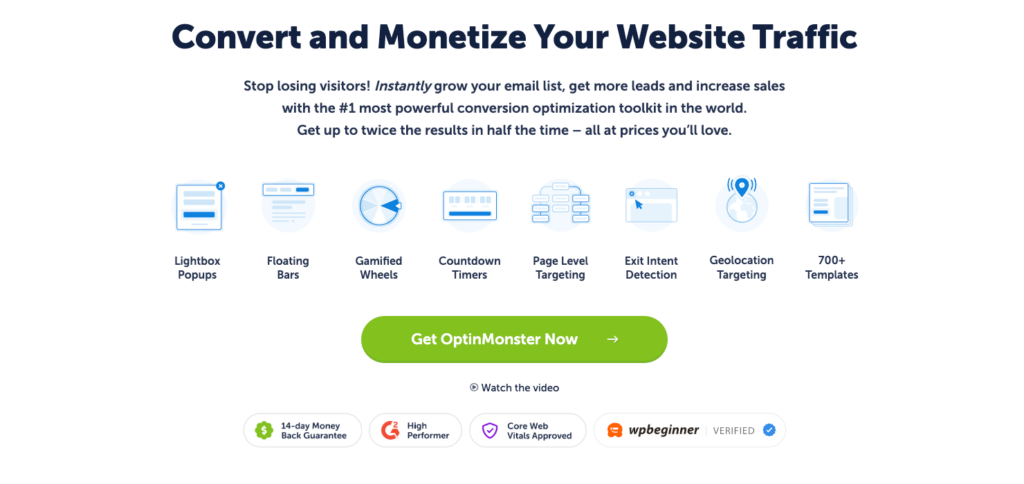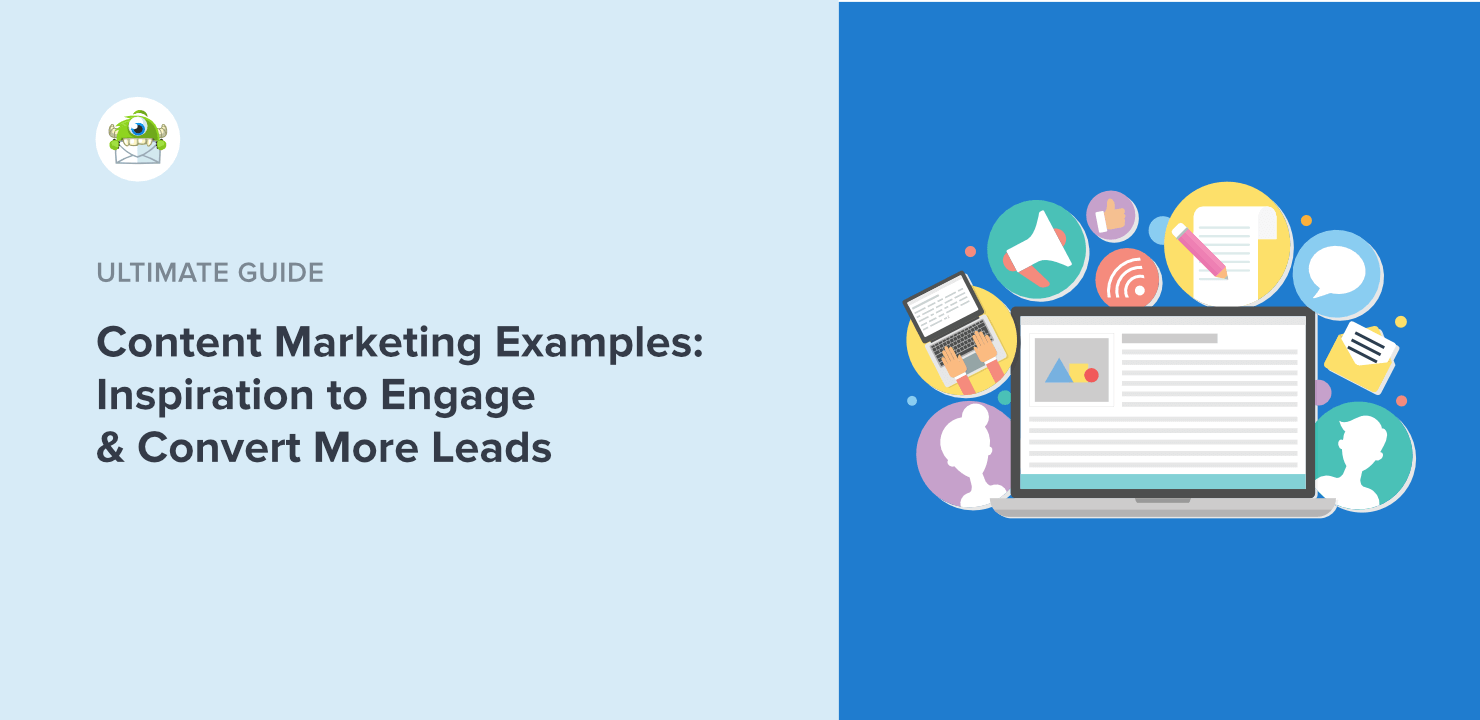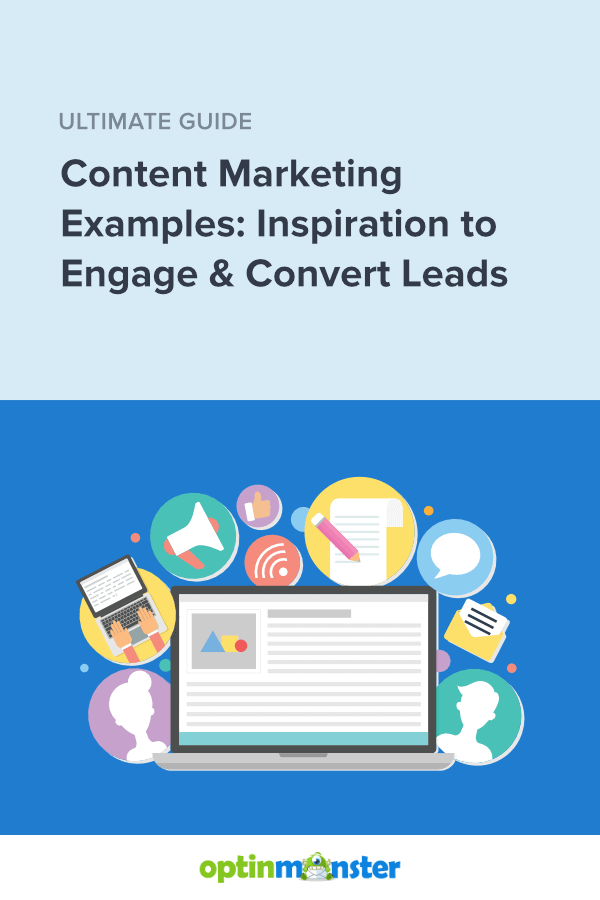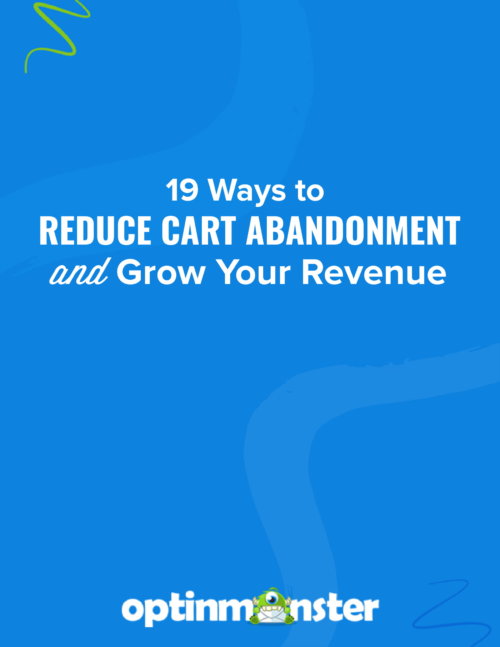Let’s be real: if you’ve Googled “content marketing examples” lately, you’ve probably seen the same tired list.
Red Bull. HubSpot. Blendtec blending an iPhone. Cool stories — back in 2015.
But today? Content marketing is a whole different game. AI tools, viral newsletters, TikTok-first campaigns, interactive calculators; the brands that are winning aren’t recycling the old playbook. They’re building smarter, faster, and more connected strategies that turn traffic into trust (and trust into revenue).
This list isn’t just another roundup. It’s a tactical breakdown of:
- Fresh campaigns launched or scaled in the last 18 months
- Real-world results and not just “they got a lot of likes”
- Actionable ideas you can steal, swipe, and spin up today
We’ve spent months studying what’s actually working across B2B, SaaS, ecommerce, and personal brands and how smart marketers (like you) can replicate these plays without needing a $10M ad budget.
If you want fluff, you won’t find it here.
If you want content marketing strategies that still slap in 2025 (and beyond), let’s dive in. 👇
Viral & Social-First Content Marketing Examples
1. Duolingo’s TikTok Persona Takeover
What they did:
Duolingo didn’t just get on TikTok, they became the weird, unhinged brand everyone wanted to follow. They turned their owl mascot into a full-blown character that dances, flirts, roasts users, and rides trending sounds like a pro.
Why it worked:
This wasn’t a campaign. It was character-driven storytelling in a space where brands usually play it safe. Duolingo leaned into TikTok culture, not against it and the payoff was massive: millions of organic views, a cult following, and free brand awareness on repeat.
How to replicate it:
You don’t need a green owl. But you do need a clear voice and someone on your team who lives on the platform. Test short-form ideas with native trends and hook viral traffic with a popup offering exclusive content or a challenge signup.
2. The Milk Road’s Edutainment Newsletter

What they did:
Crypto is complicated. Milk Road made it funny. Daily breakdowns, memes, market recaps all written like your clever friend explaining blockchain over coffee. It felt more like a Twitter thread than a newsletter.
Why it worked:
They didn’t just “do content.” They nailed tone-market fit. While competitors pushed jargon and investor talk, Milk Road built a 250K+ list by being refreshingly human and addictive. Then they got acquired. Not bad for a daily send.
How to replicate it:
If your space is noisy or boring, double down on tone. Write like a real person. Add a strong lead magnet and use referral system to reward loyal sharers. Humor = shareability = growth.
3. Canva’s Magic Studio Influencer Launch
What they did:
Canva didn’t launch Magic Studio by writing a blog. They gave it to creators. YouTubers walked through new AI features. Instagram was flooded with “Watch what this can do” reels. It was less “here’s our tool” and more “watch what’s now possible.”
Why it worked:
They skipped the marketing middleman. The audience saw the tool in action from people they already trusted. That’s not just good PR it’s high-trust, high-leverage content marketing.
How to replicate it:
Find creators who actually use your product. Give them early access and let them create. Then embed those walkthroughs on your feature pages. Want conversions? Add a countdown timer popup with early access or bonus templates.
4. Runway’s AI-Generated Reels
What they did:
Runway didn’t talk about its video tools, it used them to make scroll-stopping, AI-generated trailers and clips. These reels, powered by Runway’s Gen-2 model, turned heads on TikTok, X, and YouTube Shorts.
Why it worked:
It was pure product-led content. No “watch this tutorial” nonsense. Just show, don’t tell. And when your product creates the content? Every post is a demo.
How to replicate it:
Turn your product into the content. Then use scroll-based popups offering free walkthroughs or templates based on what users just watched. Real results sell better than polished ads.
5. Fenty Beauty’s User-Generated Instagram Takeover

What they did:
Fenty doesn’t just “do UGC” — they live it. Real people, micro-influencers, and everyday customers share makeup tutorials, reviews, and unboxings and Fenty reposts it like gold. Their feed feels like the community is the brand.
Why it worked:
This builds insane social proof. People trust people. And when your customer becomes the creator, they’re not just buyers, they’re advocates.
How to replicate it:
Start simple: “Tag us to get featured.” Create a community hashtag. Then highlight your best UGC in a product page gallery. Bonus: Use social proof popups on site: “15 people just shared their look using [Your Product]”.
AI-Powered Content Marketing Examples (That Don’t Suck)
6. Jasper’s “Content Recipes” Hub

What they did:
Jasper built a searchable library of “recipes” pre-built AI workflows that help you write anything from blog posts to LinkedIn cold pitches, tailored by industry. It’s not just “use our tool,” it’s “here’s exactly how to use it.”
Why it worked:
They turned features into strategy. Each recipe ranks for high-intent search terms and immediately converts traffic by walking users into action. No fluff, no thinking required, just plug in and go.
How to replicate it:
Package your product into use-case-specific templates. Then turn each into an SEO landing page. Use an inline form or content locker (hello, OptinMonster) to gate bonus workflows or industry packs.
7. Zapier’s AI-Generated Long-Tail Pages

What they did:
Zapier quietly rolled out dynamic landing pages like “How to connect Airtable to Google Sheets”each one AI-assisted, SEO-tuned, and loaded with embedded workflows.
Why it worked:
They didn’t blog about integrations. They ranked for them. These pages target exact intent, solve a pain point, and immediately deliver the solution inside Zapier. It’s SEO that converts on the spot.
How to replicate it:
Start with your top integrations or use cases. Use AI to help generate page variants, then layer in a contextual opt-in (“Want to skip the setup? Get our 1-click template pack”).
8. HubSpot’s AI-Powered Blog Idea Generator

What they did:
HubSpot took an old gimmick, the blog topic generator, and supercharged it with AI. Now it gives actual, usable, keyword-driven content ideas based on your inputs and goals.
Why it worked:
They didn’t build a toy. They built a lead magnet that’s actually useful. And since it ties into their core product (content marketing and CRM), it bridges the gap from free tool to paid platform.
How to replicate it:
Got a freemium tool? Refresh it with real value. Add lead capture right before results using a popup that says, “Send this strategy to my inbox” a frictionless way to grab emails after the Aha! moment.
9. Notion’s AI Template Distribution

What they did:
Notion blended AI tools into its popular templates like job descriptions, meeting notes, and project planners and let users remix or republish them inside the platform.
Why it worked:
Templates already crushed for SEO. Layering AI into them added utility and a viral loop: people started creating and sharing AI-boosted templates, building traffic and product usage without Notion lifting a finger.
How to replicate it:
If you’ve got templates, guides, or checklists, plug AI into them. Let users personalize or remix them, then gate the download or upgrade using an OptinMonster content lock.
B2B SEO-Driven Content Marketing Examples (That Actually Drive Pipeline)
10. Ahrefs’ Data-Driven SEO Guides

What they did:
Ahrefs owns the “SEO how-to” category by publishing long-form, evidence-backed guides like “How to Do a Content Audit” complete with screenshots, real results, and internal data from their own platform.
Why it worked:
Every post feels like a mini course. It ranks, gets backlinks, and shows you how to use Ahrefs to get the job done. Their content doesn’t just educate, it sells without pitching.
How to replicate it:
Don’t just write about problems, solve them with your product in the walkthrough. Bonus move: Use inline popups or tool tips offering a free checklist version in exchange for an email.
11. Gong’s Call Intelligence Insights

What they did:
Gong analyzes anonymized sales call data and turns it into snackable, shareable content like “The Top 3 Objections in Q2 SaaS Deals” or “When to Talk Pricing in the Sales Cycle.”
Why it worked:
It’s data no one else has which means it gets cited, bookmarked, and linked to like crazy. And since it’s built on their own platform, it reinforces their expertise with every word.
How to replicate it:
If you’ve got proprietary product data, use it. Even simple internal benchmarks (“our users doubled conversions using X”) can anchor a post in real results. Then turn it into gated bonus content: “Want the full dataset? Get the report.”
12. Grammarly’s “Writing Assistant” Landing Pages

What they did:
Grammarly targets long-tail searches like “How to write a resignation email” or “Apology email to a client” and serves SEO pages with examples, templates, and a live grammar tool preview.
Why it worked:
They built content around jobs to be done, not just keywords. Each page solves a specific user task, earns organic traffic, and gives users a taste of Grammarly’s value instantly.
How to replicate it:
Think about all the micro-moments your audience Googles. Then build content that solves them fast. Want to increase conversions? Add a popup: “Get all 10 templates as a free PDF.”
Product-Led Video & Event Content Marketing Examples (Turns Viewers into Users)
13. Figma’s “Config” Content Hub

What they did:
Figma turned its annual Config conference into a long-tail content machine. Every talk, demo, and keynote was repurposed into SEO blog posts, replay pages, and YouTube videos, all hosted on a clean, bingeable hub.
Why it worked:
This wasn’t just a one-day event. It became an evergreen library of product education and thought leadership. They turned 48 hours of stage time into 12 months of traffic, links, and new users.
How to replicate it:
Next time you run a webinar or summit, record everything. Then slice it into clips, quotes, and blog content. Use OptinMonster’s content lockers to gate full replays or segment lead forms based on topics.
14. ClickUp’s Use Case Walkthrough Series

What they did:
ClickUp produces hyper-specific walkthroughs like “How a marketing team plans sprints with ClickUp” or “Using ClickUp for client onboarding.” Each one is a practical how-to wrapped in real product screens.
Why it worked:
Because no one wants to be “sold” a productivity tool, they want to see themselves using it. These videos speak directly to roles, workflows, and problems. High empathy. High conversion.
How to replicate it:
Record product walk-throughs for your top 3 audience segments. Structure them like onboarding. Use time-based popups offering pre-built setups or free strategy calls after the “Aha!” moment hits.
15. Slack’s Enterprise Onboarding Video Series

What they did:
Slack doesn’t just do ads, it builds onboarding video series for IT teams, managers, and end users. Each video shows how to roll out Slack internally and fix common adoption blockers.
Why it worked:
It’s high-value, low-lift content that reduces churn and educates new stakeholders. Plus, it positions Slack as more than just chat, it’s workplace infrastructure.
How to replicate it:
Think like a customer success manager. Build “How to onboard your team” video flows, then gate them via popup for teams with X+ seats. High-intent users? Drop an instant demo CTA mid-video.
Interactive & Lead Magnet Content Marketing Examples (Built to Convert)
16. Typeform’s Quiz Funnels

What they did:
Typeform turned quizzes into their own conversion strategy. From “What’s your brand voice?” to “Which CRM fits you best?” they built interactive quiz templates anyone could copy, customize, and launch.
Why it worked:
Quizzes feel personal. They’re frictionless, fun, and they collect gold-level intent data without feeling like a form. Typeform showed how quizzes could be lead magnets and marketing tools.
How to replicate it:
Build a quiz your audience actually wants to take then gate the result. Use OptinMonster to trigger a popup on answer completion: “Get your personalized guide emailed to you.”
17. Canva’s Free Template Library

What they did:
Canva created a searchable, SEO-optimized hub of free templates, from resumes to Instagram posts to business cards. Each one doubles as a lead magnet and onboarding trigger.
Why it worked:
People don’t want to start from scratch. Canva meets them right where they are with done-for-you tools that pull them into the product immediately.
How to replicate it:
Build a mini “template hub” or swipe file tied to your product. Lock premium templates behind a popup with smart segmentation (“Get templates for SaaS founders” vs “For ecommerce owners”).
18. Outgrow’s ROI & Savings Calculators

What they did:
Outgrow turned its own product into content: ROI calculators, pricing estimators, and savings tools embedded directly into landing pages.
Why it worked:
It’s personalized content with immediate payoff. Users plug in their numbers, get a custom result, and feel like the brand understands their unique situation. Plus, these tools collect qualified lead data on autopilot.
How to replicate it:
Build a “calculator” or estimator that speaks to your audience’s core pain (time saved, money gained, leads earned). Use exit-intent popups to capture results as downloadable reports.
19. OptinMonster’s Lead Magnet Library

What we did:
We built a library of top-performing lead magnets, checklists, toolkits, swipe files and showed exactly how they were used to convert visitors. Then we bundled them into a free downloadable resource.
Why it worked:
People want examples that actually worked. And instead of telling them what to create, we showed them, packaged it, and made it frictionless to grab email, enter, done.
How to replicate it:
Keep this library updated. Add screenshots. Show context (where it was used, conversion rate). Use scroll popups that trigger when someone’s clearly browsing the page for more than just ideas.
20. Neil Patel’s Ubersuggest Freemium Tool

What he did:
Neil Patel used Ubersuggest, a free SEO tool as a lead-gen machine. Users could run site audits, get keyword suggestions, and then upgrade to unlock more results.
Why it worked:
It’s the classic freemium funnel: give people just enough value to show ROI, then hit them with a “get the rest” CTA. The tool itself does the selling.
How to replicate it:
If you’ve got any kind of tool, quiz, template generator, strip out one big value piece, and offer more behind a gated OptinMonster popup: “Unlock full results + PDF summary.”
Newsletter-First Growth Content Marketing Examples (That Became Brands)
21. Morning Brew’s Referral Engine

What they did:
Morning Brew took a simple idea, business news, but make it fun and layered it with a viral referral system that let readers unlock merch, exclusive content, or shoutouts for sharing with friends.
Why it worked:
It gamified growth. Every subscriber became a promoter, with clear rewards and smart tracking. The writing was tight, the tone was fresh, and the growth was explosive from dorm-room startup to 4M+ subscribers and a $75M exit.
How to replicate it:
Launch a referral program and promote it hard inside your emails. OptinMonster can power custom popups that show referral rewards or unique codes based on how someone signed up.
22. Marketing Examples by Harry Dry

What he did:
Harry didn’t launch a newsletter, he launched a swipe file with a soul. He pairs marketing examples with sharp copywriting breakdowns, turning each post into something you actually want to read, bookmark, and share.
Why it worked:
It’s personal. It’s visual. And it’s ridiculously useful. His site ranks for dozens of content marketing terms, and every newsletter drop creates a mini traffic spike across channels.
How to replicate it:
Keep your emails lean, visual, and immediately valuable. Think “scroll and screenshot-worthy.” Want to grow faster? Use an OptinMonster lightbox popup offering a “5 best examples” starter pack for new subs.
23. Femstreet by Sarah Nöckel

What she did:
Femstreet started as a newsletter curating news for women in VC and turned into a high-trust content brand with job boards, founder insights, and a paid member community.
Why it worked:
It served a real gap in the market. Sarah didn’t try to be for everyone, she went deep, not wide. That focus led to massive credibility, deal flow, and revenue potential.
How to replicate it:
Focus on who you serve, not just what you say. Segment your list. Create targeted lead magnets (e.g., “Startup fundraising checklist for first-time founders”), and serve it with a welcome popup or scroll-triggered CTA.
That’s 23 strategic, replicable content marketing examples — not just theory, but campaigns that moved the needle.
How OptinMonster Can Help Your Content Convert
OptinMonster is a crucial part of any successful content marketing strategy:

That’s because OptinMonster is the world’s best lead generation software. With this tool, you can deliver any content to the right users to increase conversions across your site.
It allows you to create various optin campaigns like popups, floating bars, fullscreen welcome mats, gamified spin wheels, and more.
And the best part is that you don’t need to be a professional coder to make it happen!
Here’s how it works:
Everything starts with selecting one of OptinMonster’s 700+ pre-built templates:
These are fully responsive and look great across all devices. They were designed to save you time, energy, and headaches during campaign creation.
And once you’ve selected the right template to reach your marketing goals, you can use the codeless drag-and-drop builder to edit the text and images, change colors, or add or remove elements.
This makes it easy for anyone to create professional and high-converting campaigns in minutes.
Plus, you can use OptinMonster’s advanced targeting rules to get the right content pieces to the right part of your site’s traffic.
Some of the more popular targeting rules include:
- Exit-Intent® Technology: Recover abandoning visitors as they’re actively leaving your website.
- OnSite Retargeting®: Keep users engaged by showing fresh content to returning visitors.
- Geolocation: Personalize the user journey by targeting people by their physical location.
- MonsterLinks™: Boost conversions by making your campaigns appear at the click of a button or link.
These are just a few of OptinMonster’s most popular targeting rules, though there are many others.
Once your campaigns are set up, you can integrate your email service provider (ESP) with OptinMonster.
This allows you to set your content marketing strategy on autopilot. Once you’ve gotten new leads, you’ll send them directly to your organized contact lists.
This lets you send automated email series to increase engagement and sales from your audience.9
Not sure if OptinMonster will work for you? Just check out how Crossrope was able to explode their list by 900%.
Or how Shotkit uses OptinMonster to get 40+ NEW leads every single day.
You can get similar results by clicking below and starting your 100% risk-free OptinMonster account today:
BONUS: Done-For-You Campaign Setup ($297 value)
Our conversion experts will design 1 free campaign for you to get maximum results – absolutely FREE!
More on Content Marketing:












Add a Comment